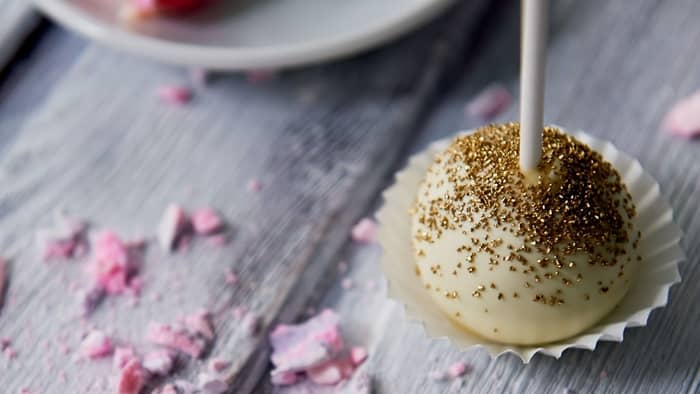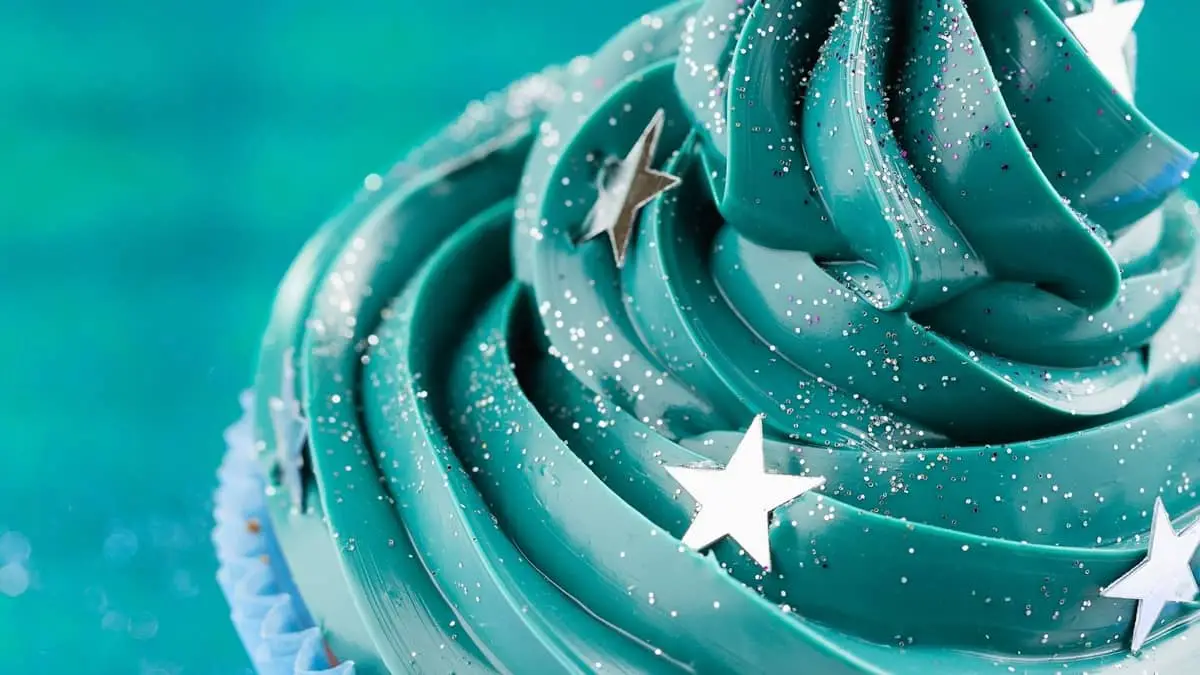Last Updated on February 12, 2022
If you are an avid cake decorator, you’ve probably come across disco dust. People use disco dust to create extravagant, sparkling cakes. However, you may wonder, is disco dust edible?
Many people are attracted to using disco dust because it gives a fun, shiny look when used. However, there is much concern about whether or not it is safe to use it on cakes or other baked goods. Though it may be appealing to look at, it doesn’t mean that it is safe to eat.
What Is Disco Dust?
Disco dust, also known as luster dust, edible glitter, or jewel dust is a type of non-toxic cake decoration that gives the appearance of real glitter. It is made from large particles, just like real glitter, and provides a wow factor when it is used on desserts or other foods. It comes in just about every color, allowing decorators’ imaginations to run wild.
Disco dust generally comes in a small jar, as it takes on a little bit to go a long way. It really gives decorations a pop and makes them more vibrant, which is great for special occasions. It can be applied with a food-grade paintbrush or even with piping gel.

Is Disco Dust Edible?
Disco dust that is labeled as food-grade or edible is safe to eat. However, buyers must beware when shopping for disco dust as some decorative glitters that are not edible are being promoted for food use. The FDA states only products labeled as edible or food-grade are safe to eat.
Disco dust that is only labeled as non-toxic is not FDA approved. Even if it says that it can be used on cakes and other desserts, it is not safe to eat. Many brands will try to pass off their disco dust for food use when it is not safe to eat.
When shopping for edible glitter, be certain the one you choose not only says edible or food-grade but also has a list of ingredients. Products that simply say non-toxic or for decorative purposes only are not FDA approved. The products that are not food-grade often contain ingredients that are not safe to consume.
“If the label simply says ‘non-toxic’ or ‘for decorative purposes only and does not include an ingredients list, the product should not be used directly on foods,” says the FDA.
Though non-toxic and for decorative purposes only disco dust can be used for decoration on baked goods, it should not be used on any part that will be eaten. For example, it is safe to use on cake toppers that will be removed before consuming the cake.
Food-grade edible glitter can be used for a variety of things such as cakes, cupcakes, cookies, and cake pops. Though the food-grade version is safe to eat, it is best to use in small quantities. Disco dust is not the same as craft glitter and it is important not to confuse the two.
The Sugar Art – DiamonDust – Edible Glitter For Decorating Cakes, Cupcakes, Cake Pops, & More
Disco dust ingredients
Edible disco dust often contains ingredients such as sugar, acacia (gum arabic), maltodextrin, and cornstarch. In addition, it will also contain color additives that have approval for food use. This includes mica-based pearlescent pigments, along with FD&C colors including FD&C Blue No. 1.
If the disco dust you buy does not have an ingredient list, do not use it on your food. It is important to remember that non-toxic does not mean edible.
How To Make Your Own
You can also make your own edible glitter at home that is completely safe to eat and shiny in appearance. To do so, simply mix together granulated or coarse sugar with food coloring. Then, spread the sugar mixture into a thin layer on a baking tray lined with parchment paper.
Next, bake the mixture at 180 degrees Fahrenheit for 5-10 minutes. Once cooled, you can store your homemade edible glitter in an airtight container and use it as needed. You can make your edible homemade glitter in as many different colors as you would like.
How To Safely Use It
If you buy food-grade edible glitter, you can safely use it to decorate your baked goods. You can sprinkle it onto your frosted baked goods by using a shaker. In addition, you can also mix it into your frosting and pipe your decorations with it or even use a food-grade paintbrush to apply it.
If you buy disco dust that is just non-toxic and not edible, you can apply it to decorations you will remove, such as cake toppers. Be certain that none of it comes in contact with the cake or dessert itself. Also be careful when using it, as it can easily get everywhere just like regular glitter.
What to look for if you buy it
When buying, look for disco dust with a label that includes food-grade, food-safe or edible. Also, be certain that it contains a list of ingredients as well. You will be able to find edible glitter online and in some specialty craft stores.
If it only says non-toxic, it is not safe for consumption and is not FDA approved. Though you can use it on decorations you won’t eat, keep it off your desserts.
Beautiful And Safe To Eat Disco Dust For Cakes
Disco dust can be a great tool for decorating cakes and other baked goods. It comes in larger pieces, giving it the appearance of real decorative glitter. However, it is important you buy the food-grade edible version over the non-toxic version, which is not safe to eat.
Whether you add it to your frosting or sprinkle it onto your cookies, it takes your baked goods up a level. There are so many stunning colors to choose from, from gold to silver and even rainbow. It is a great tool to use when decorating desserts for special occasions as it is eye-popping and beautiful.
Do you have any questions regarding is disco dust edible? If so, please ask any questions regarding edible glitter and how to properly use it in the comment section down below.
Read more about Amazing Edible Glitter for Drinks

Ever since she was a young girl, Anna has been a lover of desserts. As an adult, she enjoys
baking a variety of desserts from cakes, cookies, brownies, bread, and more from scratch. She
enjoys sharing her passion for baking with others who also have a sweet tooth. From properly
measuring ingredients to making sure they are the correct temperature, Anna knows the
importance small details can make in baking. She wants to share her experience with others in
hopes they can make the most delicious baked goods. When she’s not busy blogging, Anna
enjoys trying new recipes in the kitchen.


